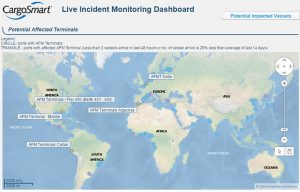Building a small business website may sound daunting, frightening even, and working with developers to ensure all of the specifications of your website are met — can also be difficult. Not only do developers take on multiple clients simultaneously, meaning they will likely have less time to focus solely on your website, but the cost of hiring a developer can be quite high — well into the thousands.
Including the time it takes to create a professional website with a developer, it can be months before completing a site with CMS (content management systems) such as WordPress.
Website builders such as Wix, Weebly and Squarespace offer flexibility when making a small business website, at a severely reduced cost and make site management/updates easy by letting you manage all of the aspects of your website from a single platform.
For starters, website builders require no prior knowledge of coding, include access to visual drag-and-drop editors and enable you to build a website in a matter of hours. Website builders even let users make advanced modifications to elements developers typically control. This can be anything from placing CTAs (calls to action buttons) or adding special plugins that give your site eCommerce capabilities.
This is where third-party integrations, email newsletter automation and site visitor data collection all come into play. With website builders, managing these processes is straightforward.
For instance, you can embed data collection forms into your website directly, and add integrations with email automation platforms for those who want to receive your latest company newsletters and promotions.
Content management systems, (for the purposes of this post, WordPress) do allow users to perform all of the above tasks, and more. They require one crucial and pricey component — a real-life developer. You can use WordPress to build a website from the ground up, but you must know how to write code.
Either way you go — WordPress or a website builder, I highly recommend doing some additional research on content management systems and website builders. Assess the pros and cons.
After weighing the additional cost of monthly site management, hosting fees, and time spent on development — the choice will be clear.
Shortly after making your decision, consider the best practices you’ll need to adhere to once you begin creating the site. This is what I would like to talk to you about, today.
Choose A Relevant Domain Name
Before you begin building, decide on a relevant domain name. A domain name is a unique address those looking for your website type in to reach your site. This should be indicative of what your business does, as well as the appropriate length.
Believe it or not, a domain name can be too long. Make sure that your website’s domain name is consistent with your brand. So, if your business is an office supply company, naming it www.johnanddavidsshandmadeofficesupplies.com might be too long.
Although the domain name still is representative of what the company does, it can cause those trying to access your site to go to another more easily-accessible website after several unsuccessful attempts at typing it. Other ramifications include losing out on sales.
Choose a domain name that is simple to remember and brandable. In this instance, a domain like www.wholesaleofficesupplies.com would suffice.
Unless your business is a non-profit organization, it is best practice to utilize either a country-specific top-level domain (the suffix of a website domain) or a more traditional business appropriate TLD such as .biz. This also includes .com, .net .gov, .us and .uk.
Assigning the right TLD will accurately tell visitors what your business does, and/or where it is located. Choosing .gov or .org can be misleading for those trying to reach your site, especially if your business is not affiliated with a government entity or a registered 501(c)(3).
In the end, this will prevent confusion, leading readers to the right site and not to a similar website. Food for thought: According to Forbes, 75 percent of websites on the internet use a ‘.com’ top-level domain — if this helps you reach a decision.
Plan your Website and Structure
Plan your site, and do so thoroughly. During the planning phase, consider creating a sitemap, which will essentially be a layout of your entire website.
Sitemaps help search engines index website content and better understand its structure. This comes in handy once someone performs a search using keywords your company and others are competing for. If the site is well-organized and includes informative content, it has a higher probability of showing up in search results. Do note that, ranking on the first few pages of Google is a labor of love and does take time, but is not impossible.
There are heaps of other elements that go into the process, but this is certainly one of the major benefits of creating a sitemap. It will even help to organize content, photos, videos, calls to action and have a better understanding of your site’s layout. During this time, you will want to define who your target audience(s) is, set goals and objectives for the website, and a budget.
Most importantly, account for ongoing management.
WordPress doesn’t offer the convenience of being able to manage your website unless you have coding knowledge. If you choose a website builder, ongoing management will not be an issue, nor will it present many major challenges.There is a slight learning curve involved in navigating website builders, and every builder’s editor is unique.
Optimize On & Off-Site SEO
This three letter acronym has the tendency to startle most, but there’s no reason to fear. Search Engine Optimization can be your best friend if dealt with properly.
In order to understand what you should do, first understand how Google decides which websites appear, and where they appear in search results.
The search engine giant ranks websites based on a few criteria, including trust, authority, the number of links pointing to and coming from your website, along with a mound of other factors. This brings me to my next point, on and off-site SEO, as Google takes this into consideration when deciding where a website will be placed in a list of results, too.
This includes social following, brand mentions and much more. These two aspects alone can indicate that your site’s content is not only relevant but informative and seen as authoritative by those who have linked to or mentioned it.
Implementing title tags (the blue link that appears on a search engine results page) is equally important. In many cases, you are given the option to edit meta descriptions — the 160 characters of text underneath the title tag in Google. Here, provide actionable and informative content that drives traffic to your website.
Finally, I want to discuss the use H1 tags, which communicate to search engines the hierarchy of a website. If you place an H1 heading on your site, this informs Google that the tag is the most important theme of your content. Furthermore, implement subheadings that communicate to Google that they too are important headings.
Unlike H1 tags, H2 and H3 are and should be used multiple times throughout a website to indicate secondary points of importance.
In the End
All in all, you want to provide site visitors with a great user experience, fast site loading times, and an organized website that is easy to navigate. If you can accomplish this, no matter if it is done by way of WordPress, or via a website builder, your site is likely on its way to becoming an authority in its respected business niche.
It comes down to if you are willing to sacrifice taking a more hands-on position when building your website or want to pay more to rid yourself of the task altogether.
No matter what, you will want to use the above best practices to bring your website from concept to reality and reap the benefits of great organic traffic, a beautiful website and one that is seen as informative.
Digital & Social Articles on Business 2 Community(61)
Report Post





